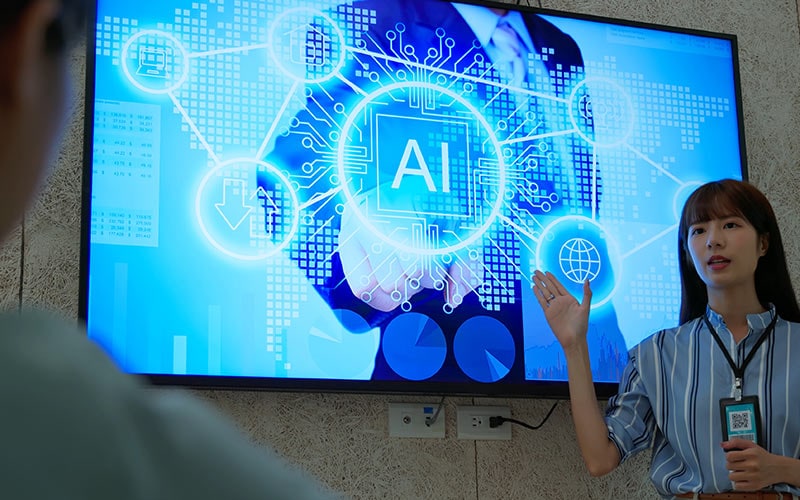
When work changes quickly, like it did this year, organizational culture often lags behind. This cultural latency has never been more acute than now. Many companies are still establishing norms around remote working. Meanwhile, both white collar gig labor and automation will likely see an uptick—posing additional challenges for culture. Organizational culture, or the normative glue that holds a company together, is linked to productivity, engagement, and loyalty.1 Companies should assess their culture now to prepare for the future.
Employees negotiate cultural norms through interaction as they sort out belonging and not belonging. Organizational culture is thus dynamic, ongoing, and evolves over time. As workplaces and workforces change, so too does organizational culture—at least, eventually. Because of the pandemic, workplaces have changed faster than organizational culture can keep up with.
While there is always a gap between work change and culture change, the gap is wider and grew faster during the pandemic than during any other time in recent history. Culture is formed through how people work, and how they work together. In more formal terms, culture unfolds through interactions, habits, routines, and rituals. Any change that influences how people work—whether it’s new technology, new designs for physical work places, a merger, or a pandemic—changes culture.
To support healthy cultures now and for the future, companies should first assess their current cultural strengths and weaknesses. Infosys is currently doing just that. We are surveying 80,000 employees across the world to assess their sentiments about which positive and negative traits (e.g., transparency, inclusivity, unrealistic expectations, rigidity) describe the current culture and support company values and mission. Employees also rate which of these markers should be emphasized and which should be de-emphasized in the future to grow a healthier culture.
As companies plan which combination of employment models they use, they should think ahead about how these models will affect culture. Below we outline some of the basic challenges of remote, contingent (nonpermanent), and automated labor. For each, we recommend a fundamental approach for evolving a healthy organizational culture.
Remote working: Create space for interactions
Many companies had some experience with remote work before the pandemic. However, it was never to an extent that required much thought to how culture translated to the remote experience.
Things are different now. Not only has remote work become the default way of operating, it looks like it is here to stay. Remote work culture is organizational culture—and that culture hasn’t settled yet. This is a good thing. Companies have the chance to create new norms that fit the future.
The main cultural challenge for remote work is how to replicate the easy interactions that happened in the physical setting of the office.2
Interactions are important in creating culture. Through interactions, employees implicitly sort out which beliefs, attitudes, and behaviors are part of the group’s norms.
The best thing companies can do to foster a healthy culture is to actively create a space for it to form—and expect inconsistencies.
For instance, schedule team lunches, happy hours, and other small, informal get-togethers. Build new virtual collaboration tools.3 Encourage informal, impromptu chats with team members outside of structured meetings. Give employees wide range in how they use video conferencing, how they dress for it, and how much polish they give their appearance for the camera.
Contingent workforces: Increase belonging
Issues of belonging are the core cultural challenges for contingent workers—gig, part-time, consultants, and contractors. The gulf between organizational belonging of contingent workers, compared to full-time employees, is a big hurdle to creating a healthy culture. Companies will need to remedy this as they increasingly rely on these workers.
Increase belonging by treating contingent employees as members of the team for their entire employee journey, including onboarding, awards and recognitions, and exit surveys. For instance, contingent workers should be included in employee experience and engagement initiatives.
Companies can apply initiatives from full-time remote workers to contingent workers, who are often off-site as well. In fact, the approach that companies are now using for remote workers could have been there all along to bridge permanent, remote, and contingent workers. For instance, investing in technology aids collaboration among distributed teams—we all know that now.
Automation and AI: Do it now while everything’s changing
The main cultural challenges with automation and AI involve how they will change people’s jobs and how to get employee buy-in on those changes. Companies can use the shift to remote work as a springboard here. They can take advantage of the fact that their employees are already in an environment where roles and routines are shifting.
Employees are more reliant than ever on technology now. Their tolerance for, and trust in, new technology to aid work may have increased in the remote environment. The pandemic has forced them to try new ways of working—it is a good time to add technology that can free up their time.
The kinds of repetitive tasks that may be a drain on remote workers are the prime targets for automation. By being freed from these task, workers have more time for creativity, solving new problems, innovating—and building company culture.
The cultural challenges for automation and AI involve how they will change people’s jobs and how to get employee buy-in on those changes
The long view
Determining the optimal mix of remote, contingent, automated, and hybrid workforces will be a struggle — for the organization itself but for stakeholders as well, including employees and clients. All of the models above require companies to attend to the social, creative, and interactional sides of work to create a healthy culture. Employees will remember this support, and the positive effects will translate across the workforce.
Finally, in the long term, culture that is more inclusive, collaborative, agile, and empathetic will weather experimentation with work models better. HR has a key role to play here, as they can facilitate leaders and managers working as role models and as coaches for the new behaviors.

References
- Emma Seppala and Kim Cameron, “Proof That Positive Work Cultures Are More Productive,” December 1, 2015, Harvard Business Review.
- Krishnamurthy Shankar, “The Office and the Home,” July 2020, LinkedIn.
- Krishnamurthy Shankar, “The Impact of COVID-19 on IT Services Industry – Expected Transformations,” July 9, 2020, British Journal of Management.





